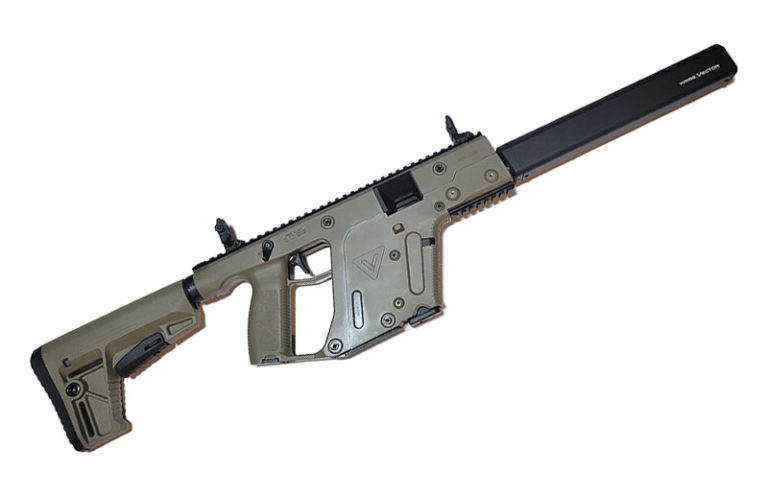
There’s no doubt that the KRISS Vector CRB has very little recoil, but does this and other benefits justify the cost?
The KRISS Vector is an iconic firearm, and it may have achieved that status quicker than any other. Much of this is due to its striking appearance which distinguishes it from all other PCCs and submachine guns. The unique aesthetic wasn’t chosen to merely set it apart visually, however, it’s the direct result of the Vector’s unorthodox internals.
The heart of this is something the company refers to as the KRISS Super V System (KSVS), and it was designed to drastically reduce recoil and muzzle climb. This system is also what gives the Vector its above-average price tag. The only real question then is whether the benefits of the KRISS Vector justify the gun’s cost.
I won’t beat around the bush, the gun has very little felt recoil, but not all of that can be attributed to the high-tech and expensive KSVS.
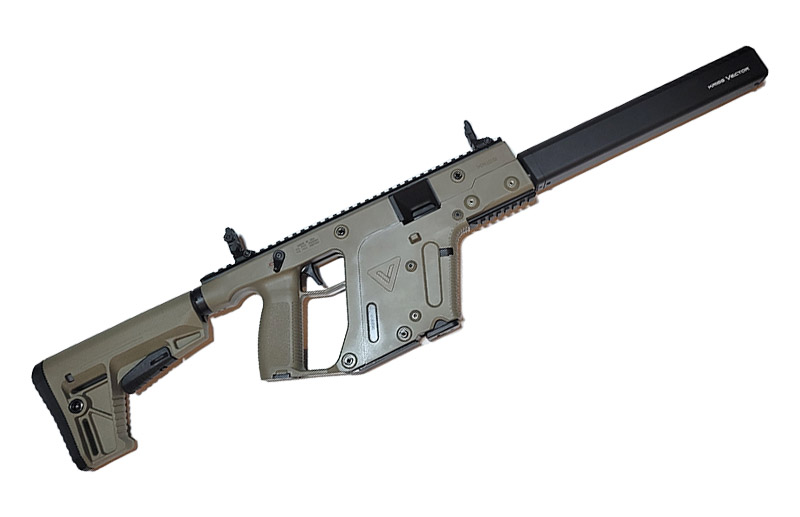
KRISS Vector Background
First announced in 2007 and commercially available a couple of years later, it didn’t take long for the space-age aesthetics of the KRISS Vector to catch the eye of the general public. This was reinforced by its prominent use in films and video games shortly after the gun was released. From the 2012 remake of Total Recall to Call of Duty, the gun was still quite new by the time non-firearm enthusiasts started to recognize it for its unique look too.
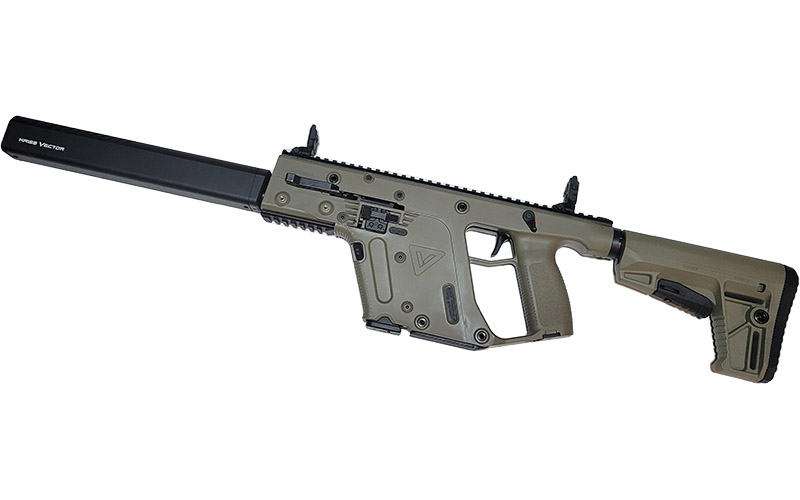
As mentioned, the primary selling point of the Vector is how little recoil it produces, and this caught the eye of some law enforcement and military groups as well. Naturally, these organizations use the select-fire (and original) variants of the gun, not the semi-auto Vector CRB commercial version that’s the focus of this review. I can’t speak to the efficacy of the recoil system in full-auto, but it would almost certainly be more beneficial than when shooting in semi.
Assuming that you’re a civilian considering purchasing a Vector CRB on your own dime, then you’re probably wondering whether the KRISS Super V System will make a noticeable and worthwhile difference in the shooting experience.
KRISS Super V System
There’s plenty of information available online if you’re interested in the nitty-gritty of the KSVS, so here we’ll just be going over the fundamentals of how it functions. In a nutshell, the giant block of material between the Vector’s magazine well and trigger guard wasn’t just put there to make it look more sci-fi, it’s there to act as a space for the bolt to cycle down into. By traveling downward instead of rearward like nearly every other self-loading firearm, the energy is diverted from the shooter’s shoulder and repurposed to help fight muzzle climb.
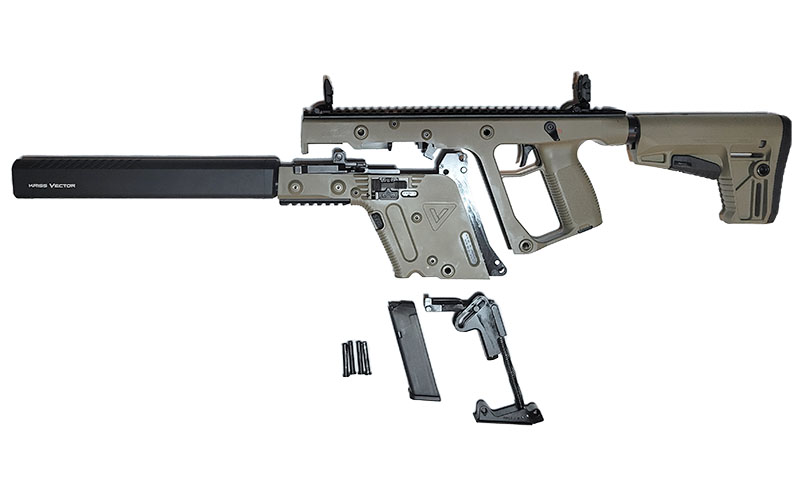
Recoil is further mitigated by the Vector’s low bore axis which is in line with both the stock and the pistol grip, keeping the energy that does go rearward level with the shooter’s shoulder.
These factors all contribute to keeping recoil at a minimum, but later we’ll discuss another aspect of the KRISS Vector CRB that helps with that.
KRISS Vector At The Range
Starting with the good, the KRISS Vector CRB was very enjoyable to shoot. As advertised, the muzzle barely moves when firing and it’s very easy to remain on target through a string of shots. Even while firing from standing at 30 yards, not much effort is required to quickly put an entire magazine in the A-zone. I did this using the included flip-up iron sights too, so it would only be easier with an optic.
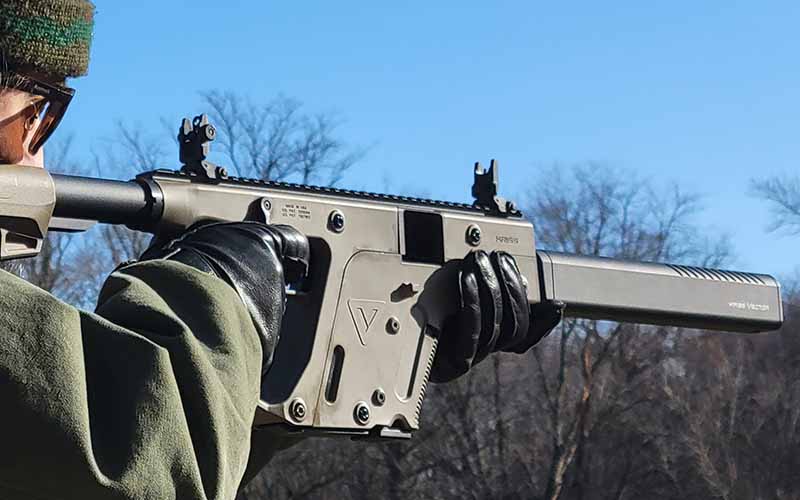
Despite its odd shape, I also found the Vector CRB to be very ergonomic. The rifle’s center of balance is so far to the rear that it makes it incredibly easy to hold it on target with one hand. For theoretical tactical applications of this gun, that’s a very useful feature to have. If one of your arms is out of commission for whatever reason, the Vector can still be fired with reasonable accuracy and efficiency with a single hand. It also makes it easier to hold the gun in your “workspace” during reloads.
The CRB was also very accurate, and when firing from a bench it had no issue printing tight groups on paper at 50 yards and ringing steel at 100 yards. Again, I did this testing using only the included iron sights, but that’s where we start getting into the quirks of this gun.
While the radically different design of the Vector certainly has some benefits, it results in some direct drawbacks as well. Pertaining to aiming specifically, the low bore axis that tames recoil also creates a large offset between the bore and the sights. Anyone who regularly shoots AR-15s should be familiar with this phenomenon, but it's even more pronounced on the Vector.
This isn’t a true issue if you understand how it works and how to compensate for it, but it’s also obviously less intuitive than with rifles that have less distance between the sights and the bore. During my testing of the rifle, all it required was adjusting my point of aim a few inches low to hit the center of my target about 30 yards away. When firing at a half-scale silhouette steel plate at 100 yards, no compensation was required. It’s also worth mentioning that the irons are adjustable for both windage and elevation, but I left them set as they were at the factory. All this really means for a prospective KRISS Vector buyer is that I’d recommend choosing an optic that can be mounted as low as possible.
The final contributor to the gun’s shootability is that the trigger felt very nice with a crisp break, no mush and a relatively short reset.

As for general reliability and other little hiccups, the Vector performed almost flawlessly. The only malfunction I experienced can probably be attributed to the lack of a break-in period, and all that happened was the bolt locked to the rear once while halfway through a magazine. Dropping the bolt brought it back into action and it chugged through the rest of the testing without issue. The ammo used was primarily Remington UMC 115-grain and Federal American Eagle 115-grain. Shout out to Federal for supplying some of the ammo for this review.
The only other Vector quirks worth mentioning pertain to loading the weapon. The charging handle is notoriously stiff and my example was no different, and loaded magazines don’t like locking in on a closed bolt. Neither of these should be true problems in the field, however, as just like an AR-15 the charging handle only needs to be used during the original loading. All subsequent magazines can be easily inserted with the bolt locked back, and the bolt just as easily dropped using the generous release button.
Verdict
Finally we arrive at the question of whether or not the KRISS Vector CRB is worth its asking price of $1,799.
That’s hard to answer, as things are worth whatever someone is willing to pay for them, and there are certainly people who want a Vector badly enough to pay that. The rifle’s construction is undoubtedly high quality and matches its futuristic aesthetic, and it does feel like an expensive gun when you hold one in your hands.
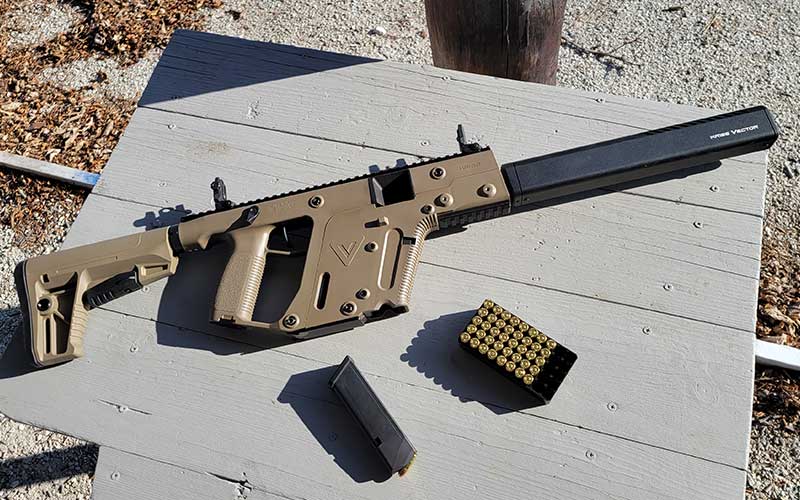
As to whether I’d recommend this gun to the average shooter looking for a PCC? The answer is probably not.
When shooting the KRISS Vector, I couldn’t help but feel that the primary contributor to its low recoil was its high weight. The CRB variant is a rifle with a 16-inch barrel shrouded in a faux suppressor, and the whole package weighs 8 pounds unloaded. While I’m sure the KSVS also helps, even without it, an 8-pound 9mm rifle with an inline stock should still be extremely pleasant to shoot.
When it comes to 9mm rifles with inline stocks, options are plentiful in the AR flavor of PCCs. And they can cost a whole lot less too.
9mm AR-style rifles have an average weight of between 6 and 7 pounds. With a lower weight and no fancy KSVS recoil system, out of the box, these will surely have more recoil than the KRISS. Given the AR platform’s modularity, however, I’m confident that one could be built that has comparable recoil to the Vector CRB for far less money.
Even a cheap 9mm AR can have its spring replaced with a stronger one or its buffer replaced with a heavier one for not much cash. A muzzle brake could also be installed and there are many ways to add extra weight to the entire package too. I, unfortunately, didn’t have access to a gun like this while reviewing the Vector, so a side-by-side test wasn’t possible. I can’t say for certain whether this hypothetical 9mm AR would shoot as nice as the KRISS does, but I’m sure it could come pretty damn close at a fraction of the cost. For most in the market for a PCC, that's going to be good enough.
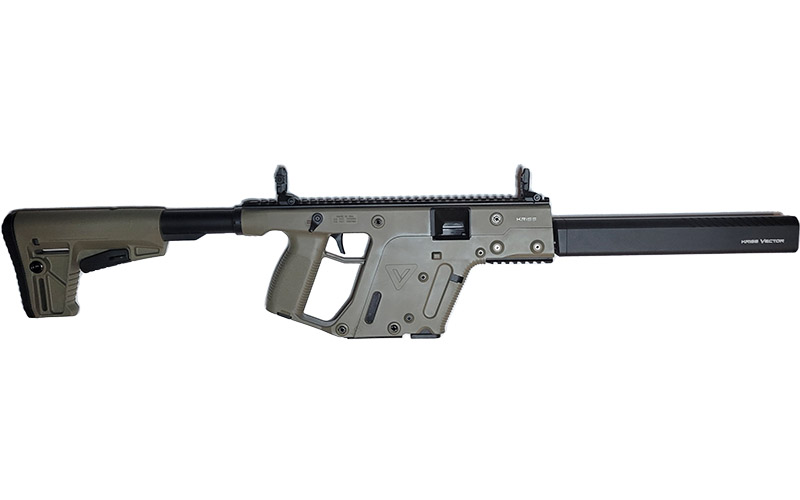
The Vector CRB is a very nice rifle and I had a good time shooting it. If you’re enamored by either the appearance or mechanical qualities of this gun and can afford to buy one, then by all means go for it.
If, however, you’re an average American shooter just looking for a PCC, something descended from the original space-age polymer Wunderwaffe of Stoner design can get you there for a lot less money.
More On PCCs:
- 13 Affordable 9mm Carbine Options
- 10mm Carbine: What Are Your Options?
- Go Small With These 8 Economical AR Pistol Options
- Should You Own A Pistol Caliber Carbine?

Next Step: Get your FREE Printable Target Pack
Enhance your shooting precision with our 62 MOA Targets, perfect for rifles and handguns. Crafted in collaboration with Storm Tactical for accuracy and versatility.
Subscribe to the Gun Digest email newsletter and get your downloadable target pack sent straight to your inbox. Stay updated with the latest firearms info in the industry.

![Best Concealed Carry Guns In 2025 [Field Tested] Wilson Combat EDC X9S 1](https://gundigest.com/wp-content/uploads/Wilson-Combat-EDC-X9S-1-324x160.jpg)


![Best 9mm Carbine: Affordable PCCs [Tested] Ruger Carbine Shooting](https://gundigest.com/wp-content/uploads/Ruger-Carbine-Shooting-100x70.jpg)
![Best AR-15: Top Options Available Today [Field Tested] Harrington and Richardson PSA XM177E2 feature](https://gundigest.com/wp-content/uploads/Harrington-and-Richardson-PSA-XM177E2-feature-100x70.jpg)

Q: Would I rather have the KRISS Vector CRB or my RUGER PC chassis carbine?
A: The RUGER PC as it is much more reliable.
KRISS needs to work at its reliability problems – period.
I have seen them repeatedly jam up at my home range (Boulder Rifle and Pistol Club).